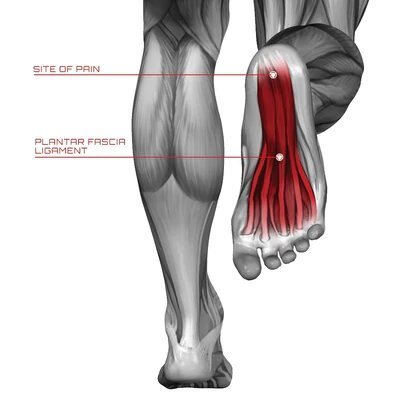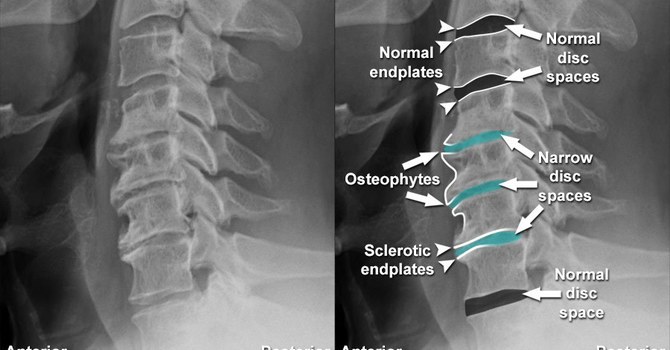My heel hurts. The bottom of my foot hurts. A quick google search and now I have plantar fasciitis. You may not have plantar fasciitis, but you most certainly have a far worse condition….Google-itis! Plantar fasciitis is defined as inflammation of the connective tissue (fascia) that runs from your heel bone to the base of your toes. When most people describe their ‘plantar fasciitis’, they point directly to the bottom of their heel or run their fingers along the bottom of their foot. While this is exactly where the plantar fascia is located, it may not be what is generating the pain.
If It Isn’t Plantar Fasciitis, What Is It?
When we address pain we look at the area where a patient feels pain, but you also must look at the surrounding areas. The calf muscles and the ankle joint are two areas that can cause ‘plantar fasciitis’. The gastrocnemius and soleus (calf muscles) can become extremely tight and refer pain into the areas seen in the picture below. An easy way to determine if this is a possibility is to simple poke through your calf muscles and determine how tight these muscles truly are. If the ‘plantar fasciitis’ is caused by one of these trigger points, dry needling is the best treatment for you. As discussed in previous emails dry needling is used to ‘reset’ tight muscles.

What Can I Do To Get Rid Of This Pain Myself?
The ankle joint is another location that can cause ‘plantar fasciitis. One of the most common movements that we lose if we do not properly stretch is ankle dorsiflexion. Dorsiflexion is the movement utilized to take your foot off the gas pedal. In many people who come in with plantar fasciitis, there is a significant loss of this motion. A few mobilizations of the ankle and a patient will typically feel an intense stretch both in the ankle joint and the calf muscles.
To mobilize the ankle joint at home, stand facing a wall and put your affected foot about 6 inches away from a wall with your unaffected foot about 3 feet behind it. With as much force as you can push your knee into the wall while keeping your entire foot on the ground. Do 10-12 repetitions of this movement and you should feel a deep stretch in the ankle and calf areas. Continue this movement every hour or so and you should see some type of relief with your ‘plantar fasciitis’. Make sure that the ankle and calf muscles are not the source of the pain first because this is a step that many people do not follow and end up beating up the bottom of their foot with frozen water bottles and lacrosse balls with little to no effect. Plantar fasciitis is a common condition, but sometimes the plantar fascia is not what causes pain.




